#nan-hee
Explore tagged Tumblr posts
Text
— 𝐒𝐀𝐈𝐊𝐈 𝐊 𝐆𝐄𝐍𝐄𝐑𝐀𝐋 𝐃𝐀𝐓𝐈𝐍𝐆 𝐇𝐄𝐀𝐃𝐂𝐀𝐍𝐎𝐍𝐒!!

we all know that saiki isn't too excited when it comes to romance.
so... how did he land you? he doesn't know either. all he does know is that you're the only person he'd actually accept romantic gestures from.
hugs, kisses, cuddling—don't expect him to jump into it suddenly at the beginning of the relationship. he'll definitely need some time do do these things, if he'd do them at all.
but, once he does sort of settle down, he basically lets you do whatever you want. so what if you're harassing him? he prefers it be you over anyone else.
and maaaybe he's okay with cuddles. a little bit. he gravitates towards you in his sleep.
cafe dates!! or, anything with sweets, at all. take him to hershey park, for all he cares—as long as he gets to buy all some candy.
he watches your TV shows with you. he does his best not to get spoiled, and if he does, then he keeps it from you and acts like he wasn't.
he takes interest in the things you like. the music genres you prefer, your favorite hobbies, and so on. unless it involves bugs, he'll probably give what you like a chance.
he tells you about his powers eventually. he doesn't really know how he expects you to act, but he definitely doesn't expect you to just shrug it off. which is exactly what you did.
"you're a what, now?"
"a psychic."
"oh. you're serious?"
"...yes."
"oh.. cool."
please buy him coffee jelly. one second of seeing him in pure bliss is filled with enough joy to last you ten lifetimes.
one time, you tried feeding him coffee jelly while making an airplane "brrrr" sound. you did the whole, "here comes the airplane!!" as you'd spin around and twist the spoon until it came to a rest in saiki's mouth.
"and... that was supposed to taste better, how?"
"it just does. i don't make the rules."
you will playfully flirt with him all the time. doesn't mean he'd respond, but he tolerates it.
from time to time, he may humor you with a quick remark to counter your statements. but, it's always out of the blue, and always will leave your face feeling like an oven with your jaw dropped.
if you think he's one to do it in public, though, then you're crazy. pda is a big no-no.
you got him a pair of sunglasses once, and he stared dead in your eyes (with his glasses on). he asked you why you thought he needed it, and you responded that they were for when his green glasses got tired.
he blinked slowly, shook his head, and ruffled your hair. (it was an excuse to wear his glasses for a bit. don't think he wouldn't read your mind. not like he can help it, anyways.)
if you're cold in public, he stands near you and uses his pyrokinesis to warm you up, and may hold your hand. in secret only. if you tell anyone, his hand in yours is as good as gone.
he doesn't really get jealous. he's fine with being alone, but if you ask him to come along, he most likely won't say no. but if teruhashi is coming along, forget about it.
you play with his hands. like... i can just imagine gently grabbing his fingers and bending them like a seesaw or a bicycle.
he makes you come with him to take care of yuuta, hoping you don't have a resemblance to anyone else in cyborg cyder man no.2, or else yuuta will be all over you.

notes: okay guys 5 finals to go 🫡
#screaming in the void#and the void screams back#saiki k#saiki k x reader#saiki kusuo no psi nan#the disastrous life of saiki k.#tdlosk#saiki kusuo x reader#kusuo saiki#saiki kusuo#saiki x reader#saiki#fluff#hee hee#headcanons#dating headcanons#reader fic
6K notes
·
View notes
Text

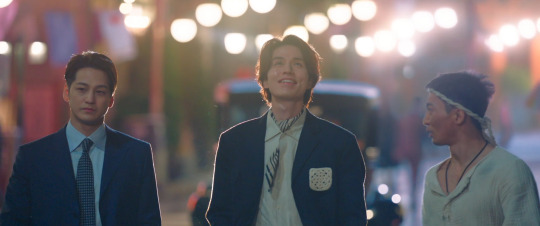
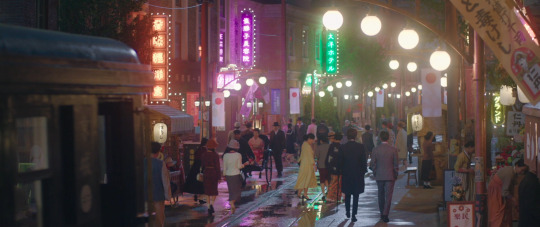
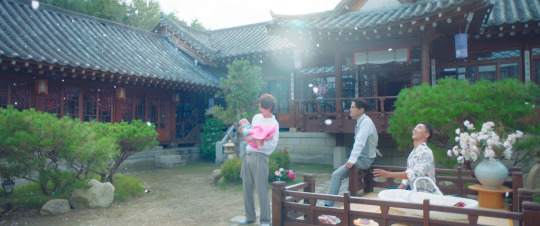
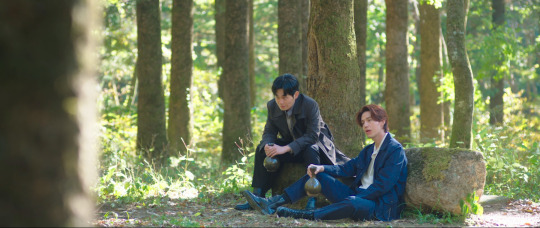
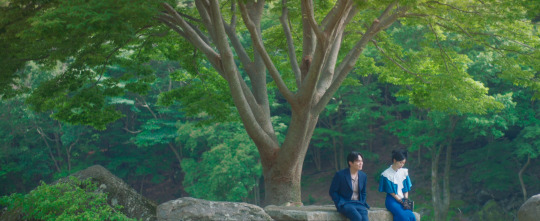



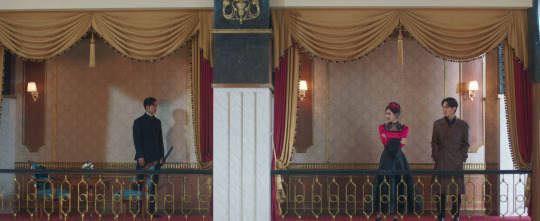


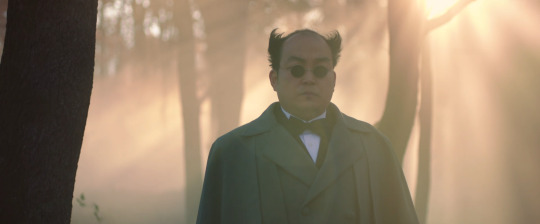
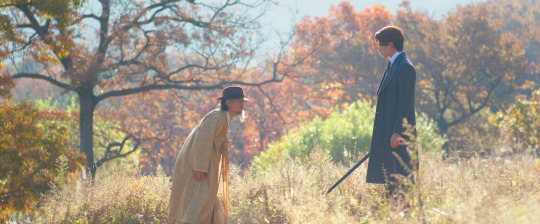
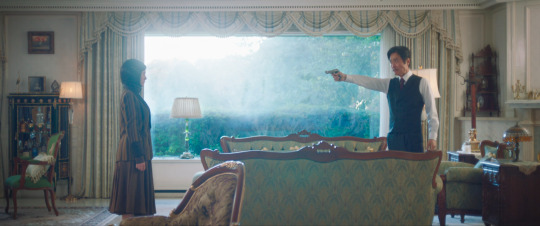
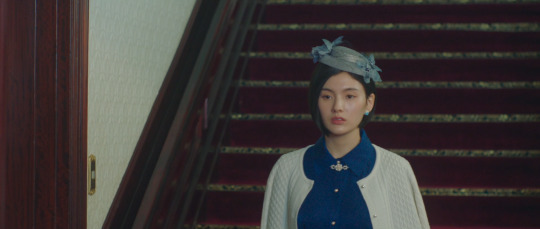

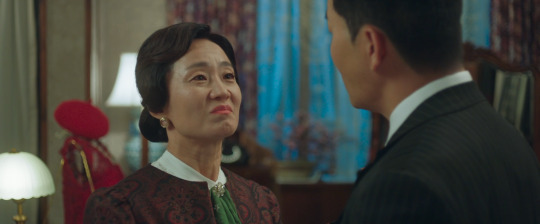
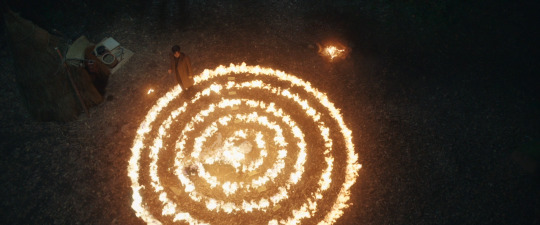
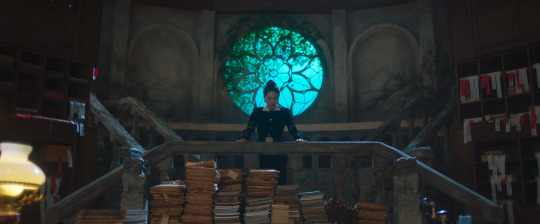
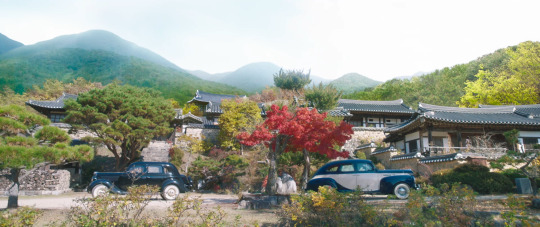

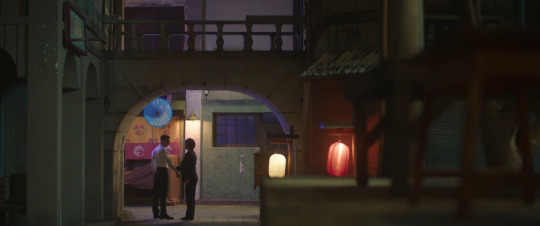
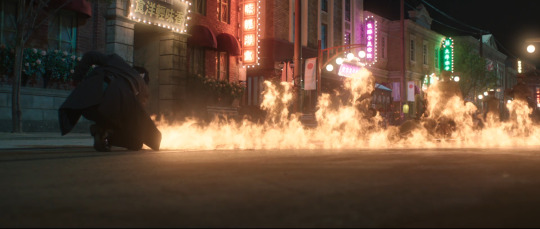
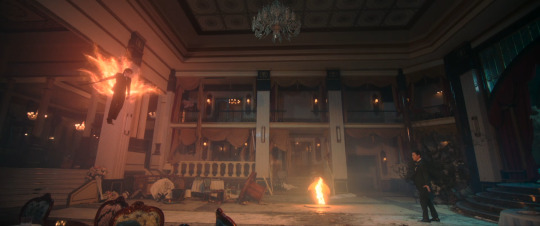
Favourite shots: Tale of the Nine Tailed 1938 [2023]
#tale of the nine tailed#tale of the nine tailed 1938#lee dongwook#lee dong wook#kim so yeon#ryu kyung soo#lee yeon#ryu hong joo#cheon moo young#gumihodyeon 1938#gumihodyeon#kdrama#kdramadaily#kim yong ji#hwang hee#kim jung nan#bok hye ja#ha do kwon#jung sun chul#jung jae won#han gun yoo#구미호뎐1938#cinematography#unedited
102 notes
·
View notes
Text
Queen of Tears
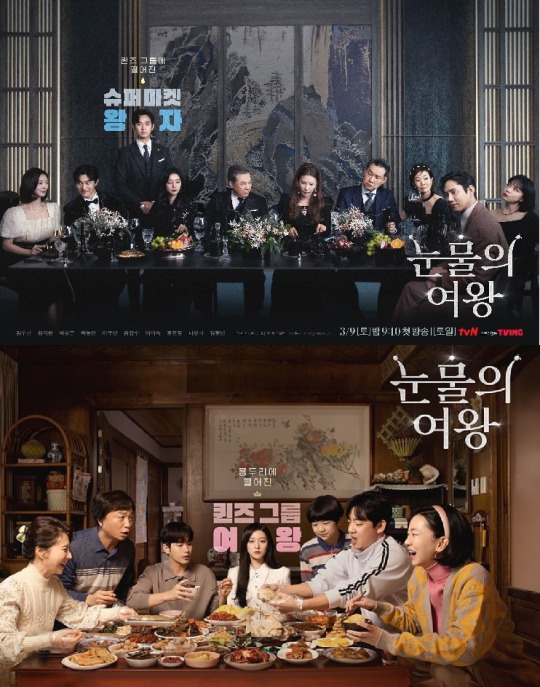
This series is not perfect, but it is still good. It has a solid storyline, and great characters. Hong Hae In and Baek Hyun Woo have been married for 3 years and the love that had united them at the beginning seems to have disappeared in their distance and silence after a miscarriage that broke their hearts. When Baek Hyun Woo finally has the courage to present the divorce papers to Hong Hae In, she tells him she has a tumor and doesn't have much time left. His decision to stay with her gives them an unexpected chance at finding that love that had united them once. Family interactions between their very different families questions dynamics and help characters grow.
I like the fact that they didn't take the easy way out with our main antagonist. The story in itself is really good and I loved it, however, production was a bit careless with details that were too big to miss: Hae In's operation - how can a person with a brain tumor have a surgery with her hair intact. Or Hyun Woo's neck injury suddenly disappearing in a second, ext. These kind of details show some careless oversight. But we can forgive them - we laugh it off and keep watching to see what happens next.
I liked it and recommend it.
#queen of tears#korean drama#kim ji won#kim soo hyun#park sung hoon#Kwak Dong-Yeon#Lee Joo-Bin#Kim Kap-Soo#Lee Mi-Sook#Jung Jin-Young#Na Young-Hee#Kim Jung-Nan#Jeon Bae-Su#Hwang Young-Hee#Kim Do-Hyun#Jang Yoon-Ju#Kim Young-Min
14 notes
·
View notes
Text
Park Sung-hoon is nailing his character as Yoon Eun-seong in Queen of Tears, but when I say that he makes my blood boil I really mean it. Also that Mo Seul-hee is shady af, I wonder if she and Eun-seong are working together in secret?
Oh, and I stan Hong Beom-ja the chaotic queen 👑👑
#misc#queen of tears#netflix#kdrama#park sunghoon#lee mi-sook#kim jung-nan#yoon eun-seong#mo seul-hee#hong beom-ja
11 notes
·
View notes
Text
Drama Review: Tale of the Nine-Tailed 1938

Source: Google Images
An unexpected case leads Lee Yeon back in time to 1938, where he reencounters Ryu Hong Joo. Once a guardian spirit of the mountain in the west, she's now the owner of a high-end restaurant in the capital city of Gyeongseong. He also meets his younger brother Lee Rang. Meanwhile, another former guardian spirit and ex-friend Cheon Moo Young has become hostile. Lee Yeon struggles to return to the present, to his loved one.
Source: MyDramaList (2023)
youtube
One of the Most Unserious Dramas Out There
Before we start: I did not watch the first one and am not planning to watch it at all. Going into Tale of the Nine-Tailed 1938 I admit I had to do a Q&A with my sister to understand what happened between the Lee brothers in this drama's modern world. However, one does not actually need to watch the previous drama to watch this and honestly speaking, from what I saw and knew about it, Tale of the Nine-Tailed 1938 is a whole lot more interesting and fun.
That being said, lets get on with how I felt about this drama. I am not kidding when I say, this is the most unserious drama for a drama anyone would think to be serious. Practically half of this drama was comedy and that is a praise. The comedy bit plays a part in making Tale of the Nine-Tailed 1938 so darn interesting and fun. Yet, this show also pulls on your heartstrings be it the brothers, the best friends or the best friends' righthand people.
I understand romance was a huge part of the first instalment but in this, it was just a tiny bit and I believe that is why I freaking loved watching this drama. In terms of what romance there was, I have no complains too. I mean, I adore the mermaid and the only complain I have is that I wished we could have gotten more scenes with her powers. When Rang said he liked someone who's stronger than him, he was not lying. The way Yeohee was written was right up my alley, she may not be as powerful as Rang but she saved him more times than he saved her and even when she was in danger, she still did not back down on a losing fight. For that reason, Yeohee is I really thought I would dislike the mermaid but nope, I love her.
Another thing I seriously love about Tale of the Nine-Tailed 1938 was the friendships. Any friendship in this drama was a pleasure to watch. Obviously, the friendship among our three mountain gods was my favourite. Don't get me wrong, Yeon is extremely lovable but in this trio, I need to worship my lady, Hongjoo and lovingly protect the cinnamon roll, Mooyoung. These three portrayed my kind of friendship where they were tight as children, still tight as adults and even with unfortunate circumstances, they might hate but they love each other more. Of course, the friendship among the roommates was a delight too. I only highlighted my top two favourites but I am not lying when I claim that this show did friendships so well.
Now, now. We have a problem though. At the beginning of this drama, Taluipa told Yeon even if he changes something in 1938, it does not affect 2023. I think its safe for me to say that we do not want that to be true, right? I am just willing to believe that what Taluipa said meant that Rang would still be dead in 2023, nothing Yeon did in 1938 changed Rang's decision in the future. I would even go as far to say that, everything Yeon did in 1938 further encouraged Rang to make that choice in the future. That is all I am willing to believe because I hear there's a third season and I need my best friends and roommates reunited to fight (without a doubt) the original mountain god. Yes, I know I said all I am willing to believe is that Rang is still dead but that's because I am sure there will be no Nine-Tailed dramas without both Lee brothers alive.
When the next instalment comes out, I will watch it as long as Hongjoo and Mooyoung are still around (if Jaeyoo, Miyeon and Yeohee are too, even better). I don't even care if there will be more romance although I wish there wouldn't be.
Rating: ★★★★★
P.S.: Anyone else felt that the big bad villains were so pathetic as compared to the smaller villains?
#drama review#tale of the nine-tailed 1938#tale of the nine tailed 1938#korean drama#lee yeon#lee rang#ryu hong joo#cheon moo young#jang yeo hee#taluipa#yoo jae yoo#lee mi yeon#lee dong wook#kim bum#kim so yeon#ryu kyung soo#woo hyun jin#kim jung nan#han gyu won#jo dal hwan
18 notes
·
View notes
Text
The Advocate: A Missing Body

The Advocate: A Missing Body [trailer]
A lawyer and a prosecutor take on a murder case that has no evidence or a body.
While still a decent one, this easily could've turned into a much better, serious thriller. There were too many distracting elements for me. Like the introduction of the two dumb colleagues, or the sudden action chase sequence that felt out of place. They hindered the build-up of the tension.
I also would've very much preferred it, if the lead would've been a slightly less arrogant, sexist character.
#The Advocate A Missing Body#Seong-nan byeon-ho-sa#Jong ho Huh#Sun kyun Lee#Go eun Kim#Hyun Sung Jang#Won hee Im#Jae woong Choi#Yoon hye Kim#foreign#South Korea
0 notes
Text




SON SEOK-KOO as JANG NAN-GAM
A KILLER PARADOX / 살인자ㅇ난감 (2024) Episode 3, dir. Lee Chang-hee
#a killer paradox#살인자ㅇ난감#son sukku#son seok koo#kdramaedit#kdramagifs#kdramadaily#dailyasiandramas#asiandramasource#asiandramaedit#dilfgifs#dilfsource#tusermona#userjinki#tuserkinga#rinblr#ninisdarlings#*gifs
229 notes
·
View notes
Text

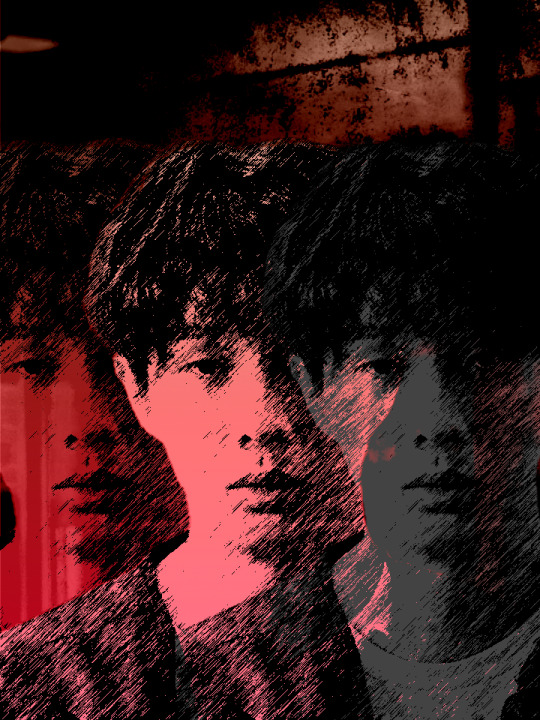
A KILLER PARADOX (dir. Lee Chang-hee) CHOI WOO-SHIK as Lee Tang SON SUKKU as Jang Nan-gam
#a killer paradox#son sukku#choi wooshik#kdramaedit#kdramadaily#kdramanetwork#kdrama netflix#kdrama#korean drama#korean actors#asiandramaedit#asiandramanet#asiandramasource#netflix#netflixedit#death note#so excited for this drama to air#the teaser already looks so interesting#somone said this show has a death note vibe to it - especially the story#so i decided to go for that iconic red/blue colour scheme that L and Light had! hope you like it!#edit#graphics#mygraphics
216 notes
·
View notes
Text
▸▸ CHAPTER OO2 : hee the hopper













CHAPTER OO1 ▸▸ MASTERLIST ▸▸CHAPTER OO3
NOTE ▸ i'm back >< changed some of the users bcs RLLY
PERMANENT TAGLIST ▸@07sleepykatz @moknu @bunnbam @jlheon @luvlyhee @flwrstqr @sunrenity @jakesprincess1 ( to join, click here ! ) networks : @enhablr @enchive
LOVESONG TAGLIST: @lcvclywon @riksaes @eleanorheartschishiya @llvrhee @gornoi @flwrstqr @letwiiparkjay @seunghancore @river-demon-slayer @heeseungthel0ml @lilifiedeans @rosas-in-the-garden @belovedsthings @nan-lzzn @jungwonswife @samouryed @cupidhoons @sophi-ee @mheretoreadff @heartheejake @partyparty-yah
#・・✸ en gelic#—🗯 lia writes#enchive#enhablr#smau : LOVESONG#enhypen x you#enhypen x y/n#enhypen fluff#enhypen smau#enhypen headcanons#enha smau#enhypen scenarios#lee heeseung x reader#heeseung x reader#heeseung x you#heeseung x y/n#heeseung fluff#heeseung smau#enha x reader#enha x you#enha x y/n#enha fluff#enha scenarios#enhypen fake texts#enha fake texts#enhypen texts#heeseung fake texts#heeseung texts
34 notes
·
View notes
Text
Korean Master List:
All the posts presented below are my original contributions, with the exception of those in which I reference the work of others. In such cases, I provide original links to the sources where I found the material, thereby acknowledging the respective creators and authors.
Old Korean Movies:
Emergency Act 19 (긴급조치 19호) - (08/08/2024)
Let's meet at Walker Hill (워커힐에서 만납시다) - Coming Soon!
Crossroads of Youth (청춘의 십자로) - (09/12/2024)
The Taxi Driver (택시운전사) - Coming Soon!
The Housemaid (하녀) (1960) - Coming Soon!
A Flower in Hell (지옥화) - Coming Soon!
The History of Korean Acts - 1900s-Now:
History of Korean music over the past century.
The History of Korean Male Groups (Rewrite):
Part 1 (Background) - (13/08/2024)
Part 2 - (21/08/2024)
Part 3 - (29/08/2024)
Part 4 - (29/08/2024)
Part 5 - (15/09/2024)
Part 6 (Background) - (08/12/2024)
Part 6.5 (Background) - (09/12/2024)
Part 7 (Background) - (10/01/2025)
Part 8 - In the Works!
The History of Korean Girl Groups (Rewrite):
A preview on what groups will be mentioned down below. This series will be coming out in the later part of next year.
Coming Soon!
Korean Soloists from the 20th Centaury:
Enjoy the history of some of famous Korean performers that lived in the 20th centaury that have been lost with time.
Female:
Yun Sim Deok (Rewrite 1, 2) - (29/04/2024)
Lee Ari Su (Rewrite - Coming Soon!) - (05/03/2024)
Kim So Hee - (05/10/2024)
Jeon Hae Nam - (13/10/2024)
Kim Nan-ok - (22/01/2025)
Kim Chae-woon - In the Works!
Park Nok Ju - Coming Soon!
Lee Hwa Jung Seon - Coming Soon!
Male:
Kim In Sik - (21/09/2024)
Lee Eun-sang - (27/09/2024)
Kim Saeng Ryeo (Pt. 1, 2) - (11,16/11/2024)
Lee In Beom - Coming Soon!
Kim Seong Tae - Coming Soon!
Jeong Jeong Ryeol - Coming Soon!
Im Bang Ul - Coming Soon!
Han Seong Jun - Coming Soon!
Kim Min Ik - Coming Soon!
Baek Seol Hee - Coming Soon!
Choi Nam Seon - Coming Soon!
Hyun Je Myeong - Coming Soon!
Lim Dong Hyeok - Coming Soon!
Photo Collection of Kisaeng's:
All photos below have been AI enhanced for a more clear viewing (there may be some errors in the pictures).
Part 1 - (17/07/2024)
Part 2 - (17/07/2024)
Part 3 - (17/07/2024)
Part 4 - (21/07/2024)
Part 5 - (21/07/2024)
Part 6 Finale - (24/07/2024)
Women considered to be the most beautiful in Korean History:
More than a century ago, a remarkable group of women known as Kisaengs captivated the elite with their captivating performances without ever compromising their dignity.
These extraordinary women, often referred to as the celebrities of their era, were renowned for their beauty and talent, as evidenced by historical records that ranked the most enchanting kisaengs of that time!
Part 1 Oh San-wol (오산월) - (11/07/2024)
Part 2 Jang Yeon Hong (장연홍) (1) - (14/07/2024)
Part 3 Jang Yeon Hong (장연홍) (2) - (16/07/2024)
Part 4 - Coming Soon!
The Birth of Korean Girl Groups Preview:
A preview on what girl groups I'll be posting in my series on 'The History of Korean girl groups'.
Part 1 - 1900s-1945 - (28/04/2024)
Part 2 - 1950s - 1960s - (28/04/2024)
Part 3 - 1960s - 1962 - (28/04/2024)
Part 4 - 1963 - 1965 - (28/04/2024)
Part 5 - 1965- 1966 - (28/04/2024)
Part 6 - 1967-1960s - (28/04/2024)
Part 7 - 1970-1972 - (02/05/2024)
Part 8 - 1974 - 1981 - (09/05/2024)
Part 9 - 1983 - 1987 - (09/05/2024)
Part 10 - 1989 - 1997 - (09/05/2024)
Part 11 - 1997 - (09/05/2024)
Part 12 Final - 1998 - 2000s - (09/05/2024)
Michael Jackson & Friends Korea, Seoul:
S.E.S: Part 1 and Part 2
H.O.T: Coming Soon!
H.O.T:
Stuff about H.O.T.
Discography Discussion:
These discography discussion posts are all made by @high-five-of-teenager-trashblog. All the albums are in released order from there debut to there final album.
We Hate All Kinds of Violence - (13/12/2020)
Wolf & Sheep - (23/11/2020)
Resurrection - (13/02/2019)
I Yah! - (29/08/2018)
Age of Peace - (26/11/2020)
Outside Castle - (24/09/2018)
'Solving the H.O.T. Syndrome'
These 3 posts are all made by @1004sface.
TV Guide 1997.01.23 - (Pt. 1) (Pt. 2) (Pt. 3)
Kangta - Atlantis: The Lost Empire 2001
H.O.T Kangta - Dreams and Faith - (27/07/2024)
Ensign O'Toole - TV Series 1962-1963
Summary & Ep 1-12 - (26/10/2024)
Ep 13-32 - (09/12/2024)
Korean Albums:
Season 1 focuses on the 1980s, a personal favourite music decade. I will discuss 35 diverse Korean groups, duos, bands, and solo artists who released albums or made their debuts during this period.
Episode 1 Lee Ja-ram, Lee Gyu-dae - (13/11/2024)
Episode 2 Yesol - (15/11/2024)
Episode 3 Byun Jin-seop - (23/11/2024)
Episode 4 Heo Young-ran - (27/11/2024)
Episode 5 Kim Wan-sun - (27/11/2024)
Episode 6 One Work - (27/11/2024)
Episode 7 KOREANA - (30/11/2024)
Episode 8 Lee Ji-yeon - (01/12/2024)
Episode 9 Yang Soo-kyung - (02/12/2024)
Episode 10 People Looking for Songs (PLFS) - (04/12/2024)
Episode 11 (Pt.1) The Lost 30 Years - Seol Woon-do/ Jin Bo-ra/ Na Hoon-a, etc. - (07/12/2024)
Episode 11 (Pt.2) - (12/01/2025)
Episode 11 (Pt.3) - In the Works!
Episode 12 EVE - (11/12/2024)
Episode 13 Blue Sky - (11/12/2024)
Episode 14 Willow Flute - (11/12/2024)
Episode 15 '81 MBC University Song Festival VOL. 1 - (13/12/2024)
Episode 16 '81 MBC University Song Festival VOL. 2 - (15/12/2024)
Episode 17 Wind Flower - (17/12/2024)
Episode 18 Groyzer X (X) - (18/12/2024)
Episode 19 Cho Yong-pil - (19/12/2024)
Episode 20 Yumiri - (20/12/2024)
Episode 21 Lee Soon-gil - (21/12/2024)
Episode 22 Deulgukhwa - (22/12/2024)
Episode 23 Namgung Okbun - (23/12/2024)
Episode 24 Min Hae-kyung - (24/12/2024)
Episode 25 Jeon Yeong-rok - (25/12/2024)
Episode 26 Kim Won-joong - (26/12/2024)
Episode 27 '85 MBC University Festival - (27/12/2024)
Episode 28 City Kids - (28/13/2024)
Episode 29 Kim Hak-rae - (29/12/2024)
Episode 30 Wild Cats - (30/12/2024)
Episode 31 Kim Jung-soo & The Express Train - (31/12/2024)
Episode 32 Boohwal - (01/01/2025)
Episode 33 Kim Jin & The Highway - (02/01/2025)
Episode 34 Rainy Day Watercolour 1. - (03/01/2025)
Episode 35 BlueBells - (04/01/2025)
Season 2 is scheduled to debut later this year, comprising 30 episodes that will delve into a variety of Korean groups, duos, bands, and solo artists, who launched their careers or released albums in the 1960s and 1970s. I invite recommendations for Korean artists that you would like me to research and discuss.
13 notes
·
View notes
Photo

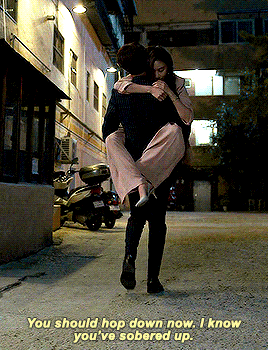


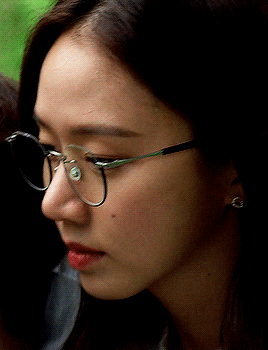



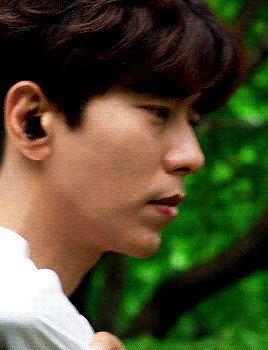
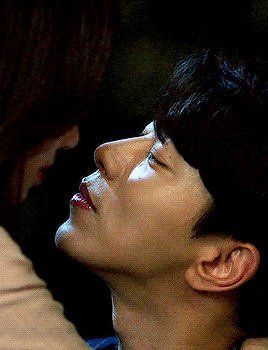
YOON HYUN-MIN & KO SUNG-HEE as KO NAN-DO & HAN SO-YEON MY HOLO LOVE 나 홀로 그대 (2020) dir. Lee Sang-Yeop and Yoon Jong-Ho

212 notes
·
View notes
Text

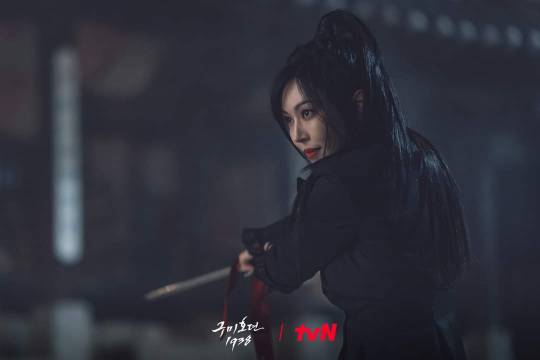

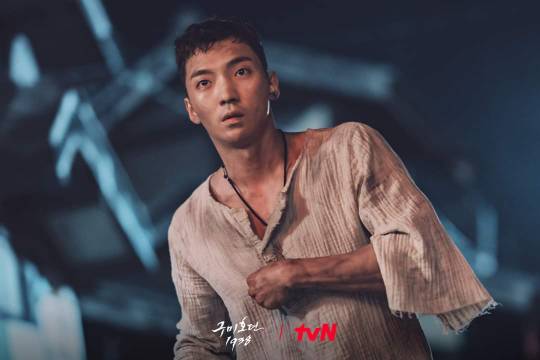
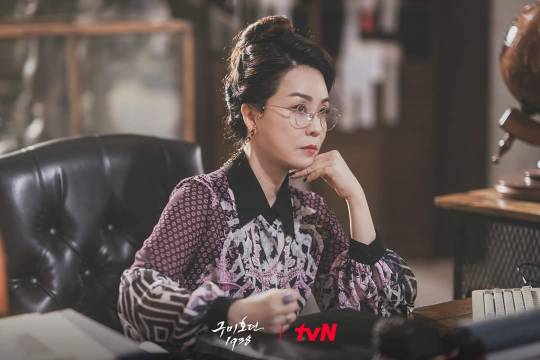
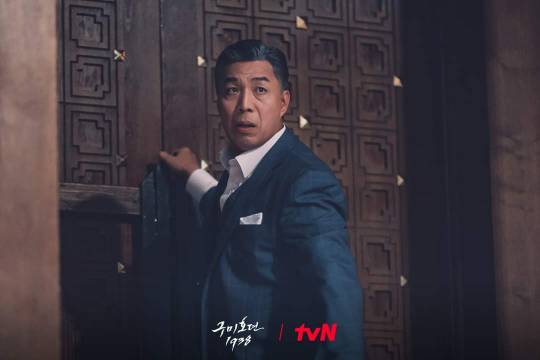


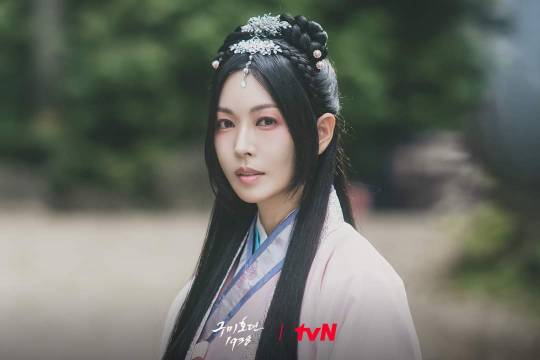
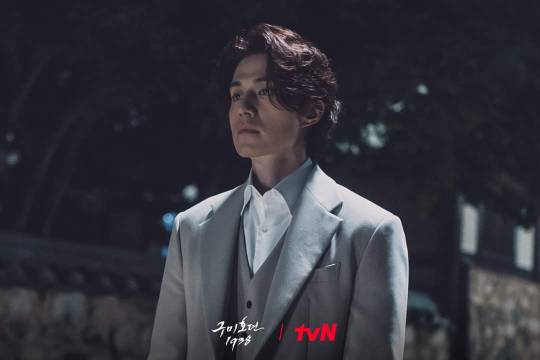
Tale of the Nine Tailed 1938 production stills, tvN
#tale of the nine tailed#tale of the nine tailed 1938#lee dong wook#lee dongwook#kim beom#kim bum#kim so yeon#ryu kyung soo#kim yong ji#hwang hee#kim jung nan#ahn gil gang#lee yeon#lee rang#kdramas#kdrama#gumihodyeon#gumihodyeon 1938
90 notes
·
View notes
Text
Reborn Rich
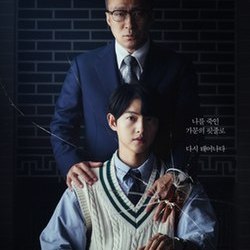
This Korean drama is based on the webtoon. I haven't read the webtoon, yet but I definitely will. I liked the series because it kept me wanting to see what would happen next. Yoo Hyeon Woo had been a faithful employee to the Soonyang owners who were fighting for the management rights over the empire. He doesn't like the people he works for, he doesn't respect them but he does what needs to be done in order to hold on to his job; until he goes on a business trip where he is to meet his death.
But he is not dead, he is now living in the body of the Jin Do Joon who had died 20 years before. The youngest grandson of the legendary Jin Yang Cheol who had created the Soonyang empire. It is through the relationship between grandfather and grandson that Yoo Hyeon Woo tries to mend the situation in his previous life by making sure Jin Yang Cheol's children and grandchildren don't get the management rights over the company.
The twist and turns in this story kept my interest. The relationship between Jin Do Joon with his grandfather and his investing partner were fun to watch. It is sad to watch how children and grandchildren watch the patriarch like vultures waiting for him to die so they can get their hands on the company. It really felt like Jin Do Joon was the only one who truly loved his grandfather.
It is interesting to see how all those experiences Yoo Hyeon Woo lived in this paralleled reality was connected to what he had lived in his first life - as Yoo Hyeon Woo would call it. I don't want to say more because this story is best to watch without knowing much. But I will say that I liked the fact that these are very gray characters and that I liked the main characters with all their imperfections.
This is a really good series. I recommend it. Can't wait to read the webtoon!
Photo from Wikipedia - https://en.wikipedia.org/wiki/Reborn_Rich
#reborn rich#korean drama#song joong ki#Lee Sung-MinKang Ki-Doong#Shin Hyun-Bin#Yoon Je-Moon#Kim Hyun#Kim Jung-Nan#Kim Nam-Hee#Park Ji-Hyun#Jo Han-Chul#Kim Shin-Rok#Kim Do-Hyun#Kim Young-Jae#Jung Hye-Young
10 notes
·
View notes
Text
The History of Korean Male Groups – From Yeonhee Professional Singers’ Quartet to BTS -> Pt. 5/? (Rewrite)
I am quite surprised by the limited information available regarding this male group, which is known by two different names. I will endeavour to clarify the situation; the group in question is referred to as either 'Arirang Boys' (아리랑보이즈는) or 'Joseon Music Troupe' (조선악극단). It remains unclear why they operated under these two names. This situation is reminiscent of the male groups 'Yeonhee Professional Quartet' (연희전문사중창단) and 'Youth Member' (청년회원), where the former has significantly more information available compared to the later.
Before Liberation – 1940s
Prior to delving deeper, I would like to clarify my approach to discussing this male group, which predates the liberation era and thus had limited information available, similar to my previous post regarding the first two male groups (Part 2). I will first outline the group and its members, followed by the company they were associated with. Additionally, I will mention the 'Jeogori Sisters,' who were part of the same company as the 'Arirang Boys,' noting that one member from each group is a married couple. However, I will refrain from providing extensive details about the 'Jeogori Sisters' as they will be addressed in a future post within The History of Korean Girl Groups.
The Arirang Boys (아리랑보이즈는), a four-member project group, emerged around 1940 and frequently performed alongside the Jeogori Sisters, a female ensemble featuring Lee Nan-young (이난영), Jang Se-jeong (장세정), Kim Neung-ja (김능자), Lee Jun-hee (이준희), and Seo Bong-hee (서봉희). The group comprised Kim Hae-song (김해송), a singer and composer married to Lee Nan-young, composer Park Si-chun (박시춘), comedian Lee Bok-bon (이복본) known for his jazz performances, and composer-arranger Song Hee-sun (송희선). Additionally, Hyun Kyung-seop (현경섭), a trumpet player for an orchestra record company, occasionally filled in for other members.

In no particular order, members of Arirang Boys: Kim Hae-song (김해송), Park Si-chun (박시춘), Lee Bok-bon (이복본), Song Hee-sun (송희선) and Hyun Kyung-seop (현경섭) who occasionally filled in for other members.
Despite not releasing any albums, they achieved popularity through their use of instruments like the guitar and violin, enhancing their stage performances. According to singer Kim Jeong-gu's (김정구) testimony prior to his death, the Arirang Boys were particularly cherished for their comedic interludes during shows.
The Arirang Boys Members:
I will briefly talk about the ‘Arirang Boys’ members here but will go into detail about them separately in future posts.
Kim Hae-song (김해송)

A few other photos of him here.
Kim Hae-song, whose real name was Kim Song-gyu (金松奎) and Japanese name Kyouya Kobayashi (金山松夫), was born in December 1911 in Gaecheon, Pyeongannam-do, during the Japanese colonial era, and he passed away around 1950 at approximately 39 or 40 years of age. It is believed that he remained in Seoul throughout the Korean War and died while being abducted to North Korea.
A multifaceted artist, he was a composer, singer, lyricist, guitarist, and musical director, active from 1935 to 1950. He graduated from Pyongyang Gwangseong High School in 1933, and although there are unverified claims of his attendance at Sungsil College and Jochi University in Japan, these remain unconfirmed. In 1935, he signed with Okeh Records, marking the beginning of his career as a singer and composer.
Lee Bok-bon (이복본)

Lee Bok-bon (李福本), born in Seoul in 1911 and died around 1950?, he was a singer from Joseon and South Korea . He first appeared on the stage of Joseon Theater Company in 1933 and appeared in director Ahn Jong-hwa's (안종화) film 'Crossroads of Youth' (청춘의 십자로) in 1934. He is also called "Korea's first jazz singer" as a member of the Seoul theater company 'Mooran Rouge'. However, during the Korean War, he was kidnapped by the North Korean People's Army during the Battle of Seoul and disappeared thereafter, and is presumed to have died.
Park Si-chun (박시춘)

A few other photos him and information but nothing new here.
Park Si-chun, real name Park Soon-dong (박순동; 朴順東) was born on October 28, 1913, in Miryang, South Korea, was a versatile artist who passed away on June 30, 1996, at 82. His talents included music composition, guitar, and proficiency in instruments like the trumpet, violin, and saxophone. He also worked in the film industry as an actor, director, producer, and music director.
One of his notable works is the pro-Japanese song "Blood Letter Support," which expresses a desire to serve as a volunteer soldier during the Pacific War. The lyrics, by Jo Myeong-am, reflect strong pro-Japanese sentiments. In 2008, he was recognized as a pro-Japanese figure by the Institute for Research in Collaborationist Activities, and a festival honouring him sparked controversy. He was also listed among 705 pro-Japanese anti-nationalists by the Truth and Reconciliation Commission in 2009.
Song Hee-sun (송희선)
I’m not shore which person in the photo shown above is Song Hee-Sun, but I hope this information that I found on him even though it a lot, is the wright Song Hee-sun.
The birth and death dates of Song Hee-sun remain unknown. He began his music education at Sungsil High School in Pyongyang and later ventured into the Japanese light music scene, establishing himself as a saxophonist and subsequently performing with OK Grand Shodan.
His notable contributions include musical dramas like "Dongyang no Rose" (동양의 장미) and "Golden Come Out Ttuktak," (금 나와라 뚝딱) as well as the song "The Young Days of the Sea" (바다의 젊은 날). Additionally, the arrangements he created for Lee Hwa-ja (이화자) during the Japanese colonial era are featured on the Oke album.
Hyun Kyung-seop (현경섭)
I’m not shore which person in the photo shown above is Hyun Kyung-seop, he might not be in the photo because he was occasionally filled in for other members at the time. While I was looking into Hun Kyung-seop I found this blog about him, that the National Museum of Korean History published a collection of Hyun Kyun-seop. As there is little information that I could find I’m going to add all the information here, but i will post him and other members' information separately in the future.

The National Museum of Korean History has published a collection featuring 267 artifacts related to Hyun Kyung-seop, a prominent trumpet player associated with Oke Records during the Japanese colonial era. This collection encompasses photographs of Hyun Kyung-seop and his personal diaries, providing insight into his life during this tumultuous period. Despite his significant contributions to music, particularly as a key member of the Joseon Music Troupe, Hyun Kyung-seop remains largely unremembered by contemporary audiences.
Beginning his career at the age of 22 in 1935, Hyun Kyung-seop gained recognition for his performances in Japan and China, with media outlets even comparing him to the legendary Louis Armstrong. His versatility extended beyond trumpet playing to include arranging, acting, dancing, and singing. However, his life took a tragic turn during the Korean War when he was abducted by North Korean soldiers in Seoul, leading to a prolonged absence that left his family in distress. Despite efforts by his son, Hyun-won, to locate him, including a DNA test through the Red Cross, the family faced numerous hardships due to the stigma associated with his disappearance, which severely restricted their opportunities and freedoms.

Hyun Kyun-seop playing the trumpet in the middle.
This compilation encompasses original images from each day of Hyun Kyung-seop’s diary, a variety of identification documents, photographs of his music colleagues, and all phonograph records he possessed, which have been digitally restored and compiled onto a DVD.
However, these DVDs are currently unavailable for access to my knowledge.
The once-obscure trumpet player Hyun Kyung-seop, who nearly faded from historical memory following his performance at the Seoul Geukdo Theatre in June 1950, has been immortalized through a collection published by the National Museum of Korean History. Transitioning from anonymity to becoming a symbol of the Japanese colonial era and the post-liberation music scene, this collection, made possible by the contributions of his family and the museum's restoration efforts, serves as a crucial resource for understanding the evolution of popular music in Korea.
Okeh Records (오케레코드):
Oke and Okeh Records are the same company. The photos shown below are people that worked for or with Okeh Records, and were attached with the information that I found of the company.
Founded in the early 1930s, Okeh Records highlighted diverse talents from Korea and Japan. Despite facing censorship and limitations, the label effectively developed around six notable groups, producing music films and establishing the Orchestration Team, Orchestra Music 'n Dance Research Institute, while managing Okestudio and theatres both domestically and internationally. The label also toured extensively across Korea, Japan, and Northern Asia, and created military songs. Although Okeh ceased its activities due to the Pacific War, its substantial yet often overlooked influence laid an essential groundwork for future artists following liberation.
Oke Records, a South Korean record label, was operational both prior to and following the country's liberation. The name "Okeh" derives from the Japanese pronunciation of the English term "Okay," and it is represented in the alphabet as 'Okeh.'
Founded in 1932, the exact date and conditions of its inception are not well-documented; however, the celebration of the '15th Anniversary of the Joseon Musical Troupe' (조선악극단) in April 1947 implies that the organization may have been established around April 1932.

Okeh Records was the latest addition to the five major record companies active during the Japanese colonial period, which included Columbia Records, Victor Records, Polydol Records, and Taepyeong Records, all of which ceased operations by 1943, coinciding with the end of the Pacific War. Despite being the last to enter the market, Okeh Records achieved notable success, becoming the second-largest producer of records and playing a crucial role in promoting many of the era's most prominent artists and songs.
Initially, the company was known as the Japanese Okeh Gramophone Company Gyeongseong Temporary Sales Office, later rebranded as the Gyeongseong Branch. The management was overseen by a Korean named Lee Cheol, although information regarding the company's financial structure is scarce. It is clear that Okeh Records depended on Japan's Teichiku Records for its recording and pressing operations, indicating a significant initial partnership with Teichiku. A theory suggests that Lee Cheol's wife, Hyeon Song-ja, had a school friend whose father was an executive at Teichiku Records, which may have aided in the branch's establishment; however, this connection remains unverified.

Okeh Records launched its first album in February 1933 and maintained an active production schedule for approximately 11 years, concluding around late 1943 or early 1944. It ranked second in the volume of new album releases, following Columbia Records, and played a pivotal role in the popular music industry, significantly outpacing its rivals. Initially, the company operated from the Japanese Deichiku Records studio until early 1936, after which it established its own recording facilities in Gyeongseong (Seoul) by late 1936, marking the beginning of its Gyeongseong recording era.
From its inception, Okeh Records prioritized stage performances and album production, featuring one of the finest bands of the time. The company distinguished itself by ensuring that all arrangements and accompaniments for popular music were performed by Korean musicians as Gyeongseong recording evolved. In 1937, Teichiku Records appointed Imura Ryozui as branch manager, taking over the operational rights from Lee Cheol, which led to the rebranding of the company as Teichiku Records Gyeongseong Branch.
Following a fire in January 1941, plans for a new office building were set in motion, resulting in a facility with studios completed by mid-May. Although the precise date of Okeh Records' final album release remains uncertain, it is believed that production continued until late 1943, with operations effectively ceasing in 1944 after the withdrawal of Japanese capital post-liberation. The reestablishment of Okeh Records in August 1948, highlighted by albums such as “Cry Silver Bell,” signified a new entity while honouring the legacy of the original Okeh Records.
Okegrand Show (오케그랜드쇼)
Since its inaugural album release in 1933, Okeh Records had prioritized stage performances, featuring a performance group known as the "Okeh Ensemble," (오케 앙상블) which consisted of artists exclusive to the label and toured extensively across the country, Japan, and Manchuria during recording intervals.
The transition of Okeh Ensemble into the Okeh Grand Show occurred when the operational rights of Okeh Records were transferred from Lee Cheol to Imura Ryozui, who had been sent from Japan's Teichiku Records post-1937.

Group of women that worked in Okeh Records. Not shore when this photo was taken probably around 1940s, and the name of the women are in the photo.
Following this shift, Lee Cheol, facing limitations on his decision-making in the recording industry, founded the Joseon Entertainment Company (initially named Joseon Recording Company) in January 1938, thereby venturing into a new domain of stage performances.
This evolution led to the reformation of the traditional orchestra into the Orchestra Grand Show, which emerged as the premier performing group in Joseon, eventually evolving into the ‘Joseon Musical Troupe’ (조선악극단) after its inaugural tour of Japan in 1939.
Orchestration Team (오케싱잉팀)
As the Joseon Akgeukdan expanded and managing multiple schedules became increasingly challenging, a sister group was established to split the performances into two factions, concentrating on popular music. This led to the formation of the Okesinging Team.


Both Photos - Not shore the name of the two ladies but both worked with Okeh Records. Note shore when both of these photo’s was taken, probably around 1940s.
The Okesinging (오케싱잉) Team, or Okegayodan (오케가요단), made its debut in June 1940, showcasing prominent artists from Okerecord, such as Lee Nan-young, Nam In-su, and Lee Hwa-ja. Despite its formal designation as a distinct entity, the Okesinging Team frequently performed alongside the Joseon Akgeukdan during events. Active until 1941, the Okesinging Team focused on musical performances before entering a brief hiatus. In 1943, it rebranded as the Shinseng Theatre Group (신생극단), broadening its repertoire beyond music and re-emerging on stage.
Orchestra Music and Dance Research Institute (오케음악무용연구소)
Akgeuk and Akgeukdan are the ‘Joseon Musical Troup’, I’m not shore why they are written as Akgeuk or Akgeukdan.
The Okeh Music and Dance Research Institute, founded by Lee Cheol (이철), who also established the Joseon Entertainment Company and led the ‘Joseon Musical Troupe’ (조선악극단), aimed to continuously identify and cultivate talent in popular arts, marking it as the first specialized educational institution for this field in history. Established in September 1940, the institute was directed by Lee Cheol, supported by a faculty of 13 professors from diverse disciplines who provided rigorous education to carefully selected students. Notable faculty members included Kim Hyeong-rae (김형래) in music, along with Kim Min-ja (김민자), Jo Yeong-suk (조영숙), and Lee Jun-hee (이준희) in dance.

This photo was taken in 1943 after the ‘Joseon Musical Troupe’ (조선악극단), the greatest entertainment group of its time, finished a performance in Tokyo to comfort Prince Yeong Chin. It was obtained and made public by Lee Jun-hee (이준희), a visiting professor at Sungkonghoe University (성공회대학교; 聖公會大學校). English – (1) Prince Yeong Chin (Lee Eun) (2) Princess Yi/ Lee Bang-ja (3) Kim Jeong-gu (4) Jang Se-jeong (5) Lee Nan-yeong (6) Lee Cheol, head of the Joseon Musical Troupe (7) Kim Hae-song (8) Lee Bok-bon (9) Lee Jong-cheol. Korean – (1) 영친왕(이은) (2) 이방자 (3) 김정구 (4) 장세정 (5) 이난영 (6) 이철 조선악극단장 (7) 김해송 (8) 이복본 (9) 이종철.
In February 1941, the inaugural performance of the first class of cadets, who had trained for approximately six months, took place, with Kim Baek-hee (김백희; 金白姬) emerging as the most distinguished among them; she later became a leading figure in musical theatre following Korea's liberation. By April 1941, an advertisement was released to recruit the second class, establishing an annual selection process for new cadets. These trainees underwent three years of instruction, during which they were not initially compensated but were exempt from tuition and provided with fashionable uniforms. After acquiring sufficient training and skill, they performed as backup dancers or in the chorus for the Joseon Music Troupe, with the most talented individuals given the chance to perform solo by their third year. Those who remained until their third year could earn a significant salary.
Baek Seol-hee (백설희; 白雪姬), who later thrived in musical and popular song genres post-liberation, was part of the third class selected in 1942 and made her solo debut just before graduating in 1944. Alongside Kim Baek-hee and Baek Seol-hee, the Okeh Music and Dance Research Institute nurtured numerous other talents in music and dance, such as Kang Yun-bok (강윤복; 康允福), Shim Yeon-ok (심연옥; 沈蓮玉), and Joo Ri (주리; 朱莉), significantly contributing to the continuation of Lee Cheol's legacy until the 1950s. The Aoi (アオイ) Music Theatre Troupe, a performance group, was established in May 1941.
Similar to the Joseon Music Theatre Troupe, the Joseon Entertainment Company managed the Aoi Music Troupe, which seemingly maintained a strong affiliation with the Okeh Music and Dance Research Institute. The troupe consisted entirely of female newcomers, and the Okeh Institute was the primary source for such talent, indicating a natural collaboration. The term 'Aoi,' which translates to 'blue' in Japanese, likely derives from 'Aoyama,' the surname of Lee Cheol, the leader of the Joseon Entertainment Company.
Following Lee Cheol's death in June 1944, the Okeh Institute rebranded itself as the Cheongsan Music and Dance Research Institute, further linking the name to Lee Cheol. The Aoi Music Troupe made its debut along the Honam Line in late May 1941; however, the absence of subsequent records suggests it may not have achieved commercial success and was likely disbanded. From the perspective of the Joseon Entertainment Company, this initiative can be viewed as a trial endeavour.
The last witness of the 'Joseon Musical Troupe', the life of Kang Yun-bok
This article was published after Kang Yun-bok’s (강윤복) who was a veteran dancer passed away in 2015, and talk about his life who worked for Okeh Records, and like the title says, he was a witness of the ‘Joseon Musical Troupe’ (조선악극단). I’ll briefly talk about him with the little information i found about him, as for some reason there is little information about him, don’t know why?
Veteran dancer Kang Yun-bok, whose birth name was Kang Yun-deok (강윤복), passed away on May 12, 2015, at the age of 91, due to natural causes.
Born in Pyongyang in 1924, Kang was a prominent member of the Joseon Music Troupe, a notable musical ensemble during the Japanese colonial era, and subsequently performed with the KPK Orchestra under the direction of composer Kim Hae-song, as well as the 8th US Army Show.

Kim Yun-bok during a KPK Orchestra performance in the late 1940s.
The 8th US Army Show thrived from 1953, coinciding with the presence of US forces during the Korean War, until the mid-1960s, when troop levels decreased due to the Vietnam War, and it was instrumental in launching the careers of various stars, including Patty Kim and Bok hee Yoon.
Music critic Park Sung-seo remarked that Kang Yun-bok was the last living member of the Joseon Akgeukdan, the premier popular culture group of the Japanese colonial period, noting that his low public profile has contributed to his obscurity, despite his significant role in the history of popular music.

Kang was married to the late Jeon Hae-nam, a trailblazer in Korean tap dancing, and he is survived by his son Park Jae-bin and daughters Dan-hee, Jin-hee, and Hyeon-hee.
----------------------------------------------------------------------
In September 1940, a significant milestone occurred in the realm of Korean popular arts with the establishment of the Okeh Music and Dance Research Institute by Lee Cheol, a prominent figure in colonial Joseon's music scene. Lee, who had already made a substantial impact through his work with Okeh Records and the Joseon Music Theatre Company, aimed to cultivate future talent in popular arts through this private educational institution. The institute became a breeding ground for numerous musicians and dancers who gained prominence in the 1940s and 1950s.

Kim Hae-song, Kang Yun-bok, and Joo Ri during a KPK Orchestra performance in the late 1940s.
The inaugural class attracted many teenage girls, who were enticed by the offer of free music, dance, and liberal arts education for three years, with the opportunity to perform on the Joseon Music Theatre Company stage for those who excelled. Ultimately, around 40 students were selected based on their appearance, talent, and growth potential, although the curriculum, which encompassed music theory, vocal training, and diverse dance styles, proved to be quite challenging.
After three years, only nine students graduated from the initial cohort of 40, among whom Kang Yun-bok (1924-2015) emerged as a notable dancer alongside Kim Baek-hee, a vocal music standout. Kang, who passed away on May 12, had initially enrolled at the research institute while attending Sookmyung Girls’ High School, driven by her passion for dance despite her family's strong opposition. Her remarkable talent and dedication soon alleviated her family's concerns, allowing her to flourish in her chosen path.
In April 1941, merely six months after his enrolment at the institute, he made his debut with the ‘Joseon Musical Troupe’ (조선악극단), quickly becoming a prominent member of the ensemble that performed across Korea, Manchuria, Japan, and China. By May 1943, he witnessed Prince Yeong Chin moved to tears by Kim Jeong-gu’s rendition of “Fallen Flowers Three Thousand” at the Prince’s Tokyo residence, and in June 1944, he learned of the unexpected passing of Lee Cheol, the troupe's leader, in Shanghai.

Kang Yun-bok, who appeared in a theatre show in the late 1950s
Following liberation, as the Joseon Akgeuk Troupe began to wane, Mr. Kang Yun-bok transitioned to the KPK Orchestra, which debuted in December 1945. This orchestra, founded by composer Kim Hae-song—a former key member of the Joseon Akgeuk Troupe who had departed earlier—incorporated many of its members, including Mr. Kang Yun-bok, effectively becoming its successor.
While the early 1940s marked the prominence of the Joseon Akgeuk Troupe, the late 1940s signified the rise of the KPK Orchestra. With the burgeoning Akgeuk market, Mr. Kang Yun-bok not only performed with various groups, including the KPK Orchestra, but also emerged as a significant choreographer.

The onset of the Korean War led to the loss of Kim Hae-song, the disbandment of the KPK Orchestra, and a swift decline in Akgeuk; however, Mr. Kang Yun-bok's influence in popular dance expanded during this tumultuous period.
In addition to various performances that supplanted musicals, the U.S. 8th Army Show, which gained momentum in the mid-1950s, and the presence of U.S. troops in Okinawa, Japan, created a demand for Mr. Kang Yun-bok's dance expertise. Furthermore, with the decision to deploy Korean troops to the Vietnam War, the Southeast Asian performance venues also sought his talents.
Beginning in the late 1960s, Kang Yun-bok primarily focused on stage and broadcast choreography while dedicating himself to mentoring future artists. His nearly four-decade career, which concluded in the late 1970s, represents a crucial chapter in the evolution of Korean popular dance. Despite the significant decline of this genre over the years, Kang's contributions extend beyond popular dance, playing a vital role in enriching the broader narrative of modern and contemporary Korean performing arts.

Group of women that worked in Okeh Records. Not shore when this photo was taken probably around 1940s, and the name of the women are in the photo.
The National Arts Archives has persistently sought Kang Yun-bok's involvement in the ongoing "Oral Recording of Korean Modern and Contemporary Art History" project, initiated in 2003. After several refusals, he finally agreed to participate on the 15th of last month.
Preparations for the project were progressing smoothly, with plans to finalize administrative tasks and commence the official oral recording in early June; however, Kang Yun-bok's unexpected passing occurred before this could take place. The loss of this key figure, who could have provided invaluable insights into the largely unrecognized Chosun Akgeukdan and KPK Orchestra, is profoundly felt.
While it is not uncommon for an individual's death to erase memories of a particular era, the immediate sense of loss in this instance is striking. Nevertheless, Mr. Kang Yun-bok left behind words and materials, and it is hoped that these can be gathered to illuminate the rich history of the past stage performances.
Joseon Musical Troupe's Performance to visit Prince Yeong Chin
This article published in 2010 was about a photo of the ‘Joseon Musical Troup’ visiting Prince Yeong Chin, that was deemed lost or a myth being found. I won’t go into much detail about the two royal family members shown in the photo as my main focus here is the ‘Joseon Musical Troup’.
Crown Prince Uimin Yi Eun, also known as Prince Yeong Chin or Lee Eun, lived from October 20, 1897, to May 1, 1970. He was part of the Imperial Family of the Korean Empire and held a political role within the Empire of Japan. He was married to Princess Yi Bang-ja, who was born on November 4, 1901, and passed away on April 30, 1989. Princess Yi Bang-ja was also a member of the Imperial Family of Japan and was the eldest daughter of Prince Nashimotonomiya Morimasa, making her the first queen.


At the former location of the palace, the evening smoke drifts lazily in the gentle river breeze, prompting a reflection on the fate of the three thousand palace ladies who once resided there.
In 1943, Kim Jeong-gu, a prominent 27-year-old singer of his era, performed his renowned song "Fallen Flowers Three Thousand" (낙화삼천) at the Akasaka mansion in Tokyo for Prince Yeongchin (Lee Eun) and Princess Yeongchin (Lee Bang-ja), who were held captive in Japan. The poignant performance moved Prince Yeongchin to tears, and soon, all fifty attendees were similarly affected.
A notable legend in Korean pop history recounts how the finest singers of the Joseon dynasty travelled to Japan to perform for Prince Yeong Chin, resulting in a collective outpouring of tears from the audience. The photograph surfaced, providing evidence that substantiates this poignant narrative. (The photo in question shown below)

This photo was taken in 1943 after they finished a performance in Tokyo to comfort Prince Yeong Chin. It was obtained and made public by Lee Jun-hee (이준희), a visiting professor at Sungkonghoe University (성공회대학교; 聖公會大學校). Prince Yeong Chin (Lee Eun) (영친왕(이은) and Princess Yi/ Lee Bang-ja (이방자) can be seen in the centre of the photo surrounded by the ‘Joseon Musical Troupe’.
Lee Jun-hee, a visiting professor at Sungkonghoe University and an authority on vintage pop music, revealed on the 24th that he uncovered a commemorative photograph of the ‘Joseon Musical Troupe’ (조선악극단), which featured prominent artists of the era such as Kim Jeong-gu, Lee Nan-young, Jang Se-jeong, Song Dal-hyeop, and Kim Hae-song, alongside Lee Bok-bon and Lee Jong-cheol, during their visit to Prince Yeong Chin’s residence in Akasaka in 1943, where they held a consolation performance for the king.

The photograph was preserved by Kang Yun-bok, an 86-year-old first-year researcher at the Music and Dance Research Institute of Oke Records, led by Lee Cheol, the troupe's head, and Kang's experience parallels that of a modern trainee in a major entertainment agency. He also recounted the poignant moment when Prince Yeong Chin and the troupe members were moved to tears by Kim Jeong-gu's performance.
The professor noted that the Joseon Akgeukdan, established in the 1930s, was instrumental in cultivating many legendary singers and enjoyed significant popularity in Japan, which contributed to their emotional connection to Prince Yeong Chin, reflecting their sorrow over the loss of their homeland, a sentiment shared by all the performers who have since passed away.
I found the news clip of the ‘Joseon Musical Troupe’ first public release of footage of them. First public release of footage of the 'Joseon Akgeukdan' from the Japanese colonial period Anchor Translation – “Do you know about the 'Joseon Musical Troupe', which featured the best stars of the time during the Japanese colonial period? KBS has obtained footage of the Joseon Musical Troupe's activities, which soothed the nation's sorrow. This is reporter Cho Ji-hyeon.” Report Translation - "This is a performance by the Joseon Music Troupe in Japan in 1939, during the Japanese colonial period. The song they are singing passionately is the new folk song “A New Day Is Dawning.” You can see the faces of Go Bok-su, the greatest star of the time, from Living in a Foreign Land, Lee Nan-young from Tears of Mokpo, Jang Se-jeong from The Ferry Departs, and Nam In-su. This is “Money Song” sung by Kim Jeong-gu. <Recording> “The wind is blowing. The wind of money is blowing.” The conductor, Son Mok-in, is a giant of our music industry who composed Tears of Mokpo and Living in a Foreign Land. These videos were inserted into a Japanese film and are being released for the first time in 70 years. <Interview> Lee Jun-hee (Visiting Professor at Sungkonghoe University): “The oldest popular song material... It has tremendous historical significance.” During the Japanese colonial period, the Joseon Music Troupe enjoyed immense popularity, to the point of touring China and Japan. A photo taken in 1943 with the Joseon Music Troupe at the invitation of Prince Yeongchin, who was taken as a hostage to Japan, has also been released. It is said that Prince Yeongchin shed tears when Kim Jeong-gu sang 'Nakhwasamcheon', which is about the fall of Baekje. The Joseon Musical Troupe, which comforted the pain of the nation with songs during the colonial period. You can watch videos of their activities on the special song stage for the founding of the public corporation. This is Jo Ji-hyun from KBS News."
The photograph was featured on KBS 1TV's "Gayo Stage" as part of a special broadcast commemorating Independence Movement Day on March 1. During this episode, a video from 1939 showcasing the Joseon Akgeukdan was presented, which the production team acquired through a professor. The footage included performances by notable singers such as Nam In-su, Kim Jeong-gu, Go Bok-su, Jang Se-jeong, and Lee Nan-young, who collectively sang contemporary folk songs like "Don Taryeong" and "A New Day Is Bright." Producer Kang Young-won remarked that this video is likely the oldest surviving recording related to Korean pop music
There are probably more interviews about people talking about Okah Records and other Korean record company artists out there but at this point i can't find any more. If people can find any more interviews about veteran artists just post them below, it would really helpful.
While concluding my research on Okah Records, I discovered several interviews filmed in 2009 featuring individuals who were either married to or children of the artists associated with Okah Records during the 1940s. The interviews included Lee Young-mi, daughter of Lee Cheol; Oh Jeong-sim, wife of Son Mok-in; and Kim Young-jae, son of Kim Seong-heum. Unfortunately, these videos lack subtitles, leaving me unable to comprehend their discussions.
Despite the limited availability of videos featuring their families discussing these renowned artists, gaining insights and engaging with those who knew them proves invaluable for understanding the history of the Korean entertainment industry prior to liberation.
#kpop#90s kpop#boy group#10s#20s#60s#70s#80s#90s#2000s#2010s#Japan#history#korean history#Korea#South Korea#korean music history
6 notes
·
View notes
Text
I feel like a zombie newly arisen from a long buried grave - it’s been YEARS since I’ve watched more than one drama at a time and suddenly I’m watching three currently airing dramas?
Clearly I like to torture myself. I have other more important things to do than drama watch but what can I say - I’m a tad bit obsessed.

It’s been years since I’ve watched a currently airing kdrama of all things but I’m really enjoying Castaway Diva. Park Eun Bin is blowing my mind even if the story itself isn’t!
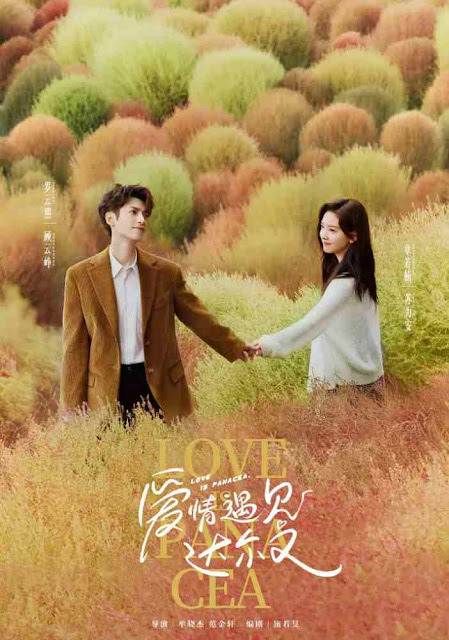
Love is Panacea
God help me, but I do love Luo Yun Xi ever since his Run Yu days and it’s not slowing down. However, Zhang Ruo Nan is new to me and I’m super impressed with her - she’s stunning (reminds me of Han So Hee) and she’s acting her socks off as the female lead!
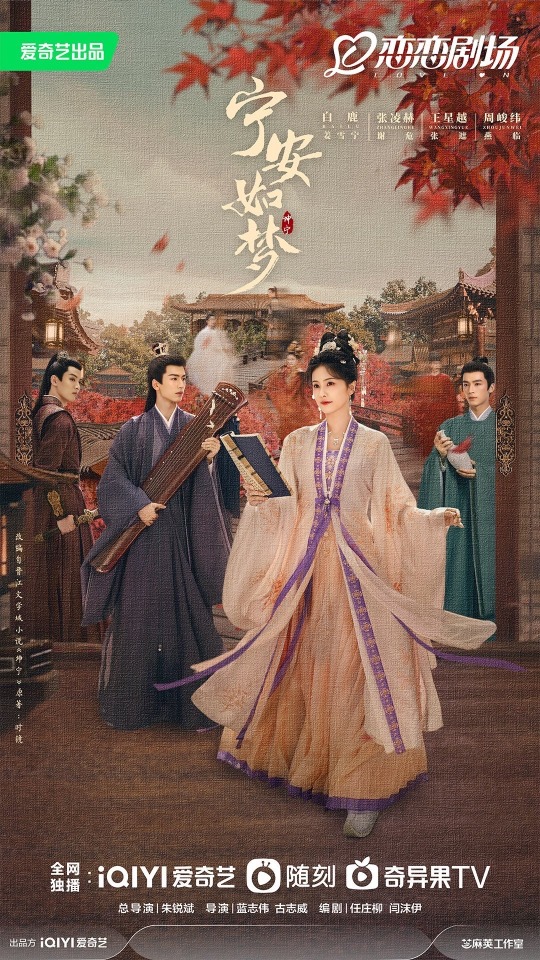
Honestly, I didn’t think I’d be giving Story of Kunning Palace a try especially since I was so disappointed with My Journey to You. I wholeheartedly admit I was wrong to even second guess queen Bai Lu. I bow to her greatness. I’m enjoying this so much, it may even supplant Lost You Forever as my 2023 favourite if it keeps up its current pacing!
#steph watches dramas#cdrama#kdrama#castaway diva#love is panacea#story of kunning palace#I might be a tad bit obsessed…#luo yunxi#bai lu
20 notes
·
View notes
Note
I forgot a number in my overexcitement. Haleth #6.
Hee! I did wonder, "what... all of them?" XD
6. ...the scene that I think shows just how awesome they really are.
That's a tough one, because all of Haleth's bit is an awesome bit. :D But I think I'll go with the bit where she leads the Haladin through Nan Dungortheb. We don't really get any detail on what they face there, but we're told she manages to keep them going "by the strength of her will". That, to me, speaks volumes about her grit and determination, as well as the loyalty she inspires in her people, because even though the migration wasn't especially an especially popular move in the first place, and there are many who "bitterly repented of their journey" after the losses they incur, most of her people still love and honour her afterwards. Love that! Fandom ask meme
4 notes
·
View notes